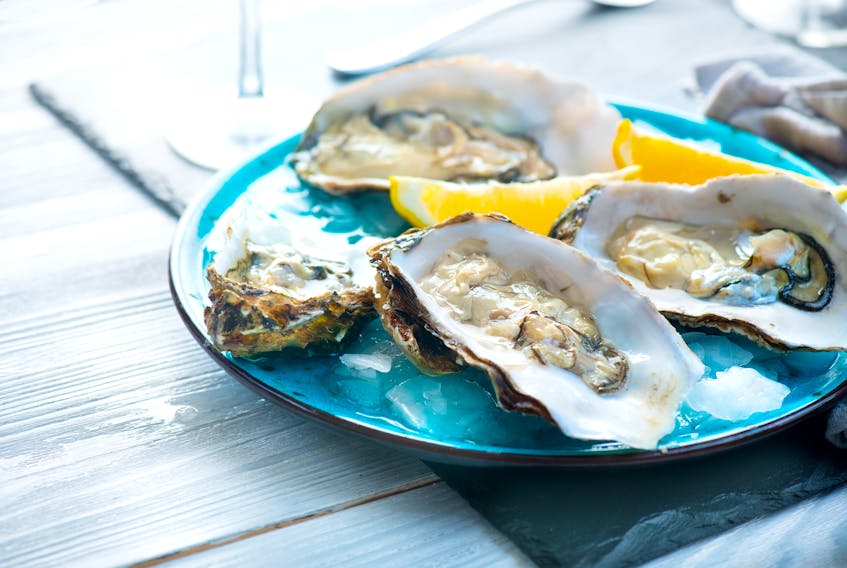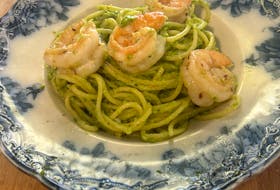Oysters, like lobster, were once considered poor people’s food.
Over time, the lowly oyster graduated from seaside sustenance to white linen standard. An order of a dozen oysters is now more often used as a sign of wealth and decadence rather than a desire to explore the provenance and unique character oysters offer.
Once smothered in bright red cocktail sauce, as so often done, oysters lose their sense of terroir – or, in the case of seafood, their ‘merroir’ character. Merroir is a recently introduced term describing how the location of an oyster bed can be reflected in the unique taste of mollusc itself.
As the fascination with white linen restaurants fades and the rise of farm or sea to table restaurants rises, the provenance of seafood is more top of mind. One person who understands the importance of the who and where of seafood is Hana Nelson, owner of Afishionado, a modern-style fishmonger located in Halifax’s North End.
Of her decision to open a business support local fisher people, Nelson says, “I wanted to celebrate local seafood in Nova Scotia. It was something that I saw was missing from the marketplace….a place where you can come learn stories about the fishermen who drive our economy….in local food, often there is not a lot of storytelling about those who work in our oceans.”
Nelson believes it is especially important to understand how and where seafood is caught.
"The ocean is a pretty big place. Fish swim across borders. Traceability is important to make sure we are harvesting fish from areas we can (from a sustainability point of view) harvest from," she says.
"It is important that we are keeping track of what we are harvesting. It’s a really big issue in the seafood world. It's our responsibility as consumers to make sure our purchases from fisheries that can withstand being fished.”
Nelson points to oysters as both a traceable product but also a product that has a net benefit to our environment. According to Nelson, oysters will filter up to 40 litres of water a day. They are not only tasty but clean our harbours at the same time.
One of her favourite oysters, and mine, are ShanDaph, farmed in pristine waters of Big Island in Merigomish harbour. We used these oysters to create a recipe inspired by a Louisiana-style Po’Boy sandwich.

How to shuck an oyster in five steps
By Hana Nelson, Afishianado
What You’ll Need:
a cloth and an oyster shucker
Wash your hands before starting.
Place oyster cup side down in the middle of a folded dishcloth and hold in position with your hand.
With your other hand, place the tip of the shucker’s blade in the hinge of the oyster.
Note: it’s not about the force but finding the right spot. Once you’ve found the natural divide between the top and bottom shell, wiggle your shucker with a little more force.
Once you feel the blade enter the oyster, turn it 90 degrees.
This will open the oyster.
Pick up the oyster with your hand. Disconnect the top of the oyster from the shell by running the blade of the shucker between the shells.
This will disconnect the upper part of the adductor muscle hold the oyster together.
Cut the bottom part of adductor muscle to remove the meat from the lower shell.
Repeat until all oysters are shucked.
Note: If you break off a little shell while shucking, drain off a little liquid and the shell will come with it.
Pro Tip: Store your oysters cup side down to prevent the oysters from opening. Also, don’t store oysters in a closed container.
Shuck and savour: New ways to enjoy oysters
So now you know how to shuck an oyster, it’s time to enjoy them. While oysters are traditionally served raw, on the half shell, they do not have to be limited to being served with lemon wedges and store-bought hot sauce.
I like serving mine with a classic mignonette (diced shallot, red wine vinegar, and sugar), a European-style salsa verde (puree of parsley, garlic, lemon, capers, and sardines), or even a good homemade cocktail sauce (ketchup and prepared horseradish).
I also like frying oysters. One of my very favourite ways to panko-crusting and frying them. I hope you enjoy my interpretation of an oyster po’boy sandwich.
Open Face Oyster Po’Boy
Recipe by Mark DeWolf
Four servings (appetizer) or two servings (main course)
12 oysters, shucked
1/2 cup seasoned flour
1 egg + 1 tbsp water, beaten
3/4 cup panko
Fresh thyme (optional)
Vegetable oil
4 slices Parisian baguette, toasted
Roasted garlic aioli
Microgreens, for garnish
Lemon wedges
Directions:
Place flour, egg wash and panko in individual bowls. Add a little more flavour by adding fresh thyme to your panko but consider this an option, not a rule.
One by one, dip an oyster in flour, then egg wash, then cover in panko. Repeat until all oysters are crusted with panko.
Place a deep-sided pan over medium-high heat. Add enough oil to cover the bottom of the pan. When oil begins to smoke, add the oysters. Fry them until golden brown on each side. Remove from pan and set on a paper towel to drain excess oil.
Place a tablespoon of aioli on a slice of baguette. Top with three oysters and microgreens. Squeeze a lemon wedge over top and season with salt. Repeat.
To make the aioli, first puree one clove roasted garlic, one egg yolk and one tablespoon lemon juice until well combined. Slowly whisk in one cup of olive oil. Season with salt and pepper to taste.
Slurps and Sips - Pairings for oysters
Nova Scotia Traditional Method (TM) Sparkling Wine
The crisp, lively acidity of a Nova Scotia TM sparkling wine, when matched with the salinity of a fresh oyster, is a food and wine symphony of flavours.
L’Acadie Vineyards Prestige Brut (L’Acadie Vineyards, NSLC)
Chablis
Chablis and oysters are a deep-rooted pairing - literally. The Northern French wine region of Chablis, 140 million years ago, was under water. As the water receded over the millennia, soils rich in fossilized oyster beds emerged. While scientists would argue the fragmented fossilized oyster shells do not contribute flavour to the Chardonnay-based wines of the region, romantics, like myself, theorize there is an undeniable saline-like quality to the wines which make them ideal pairings to oysters.
William Fevre Chablis (NSLC, Bishop’s Cellar)
Sauvignon Blanc
Crisp, bright Sauvignon Blanc, particularly those from classic regions, such as Sancerre, or the cooler corners of Marlborough in New Zealand, have a verve and energy that suits oyster dishes.
Salvard Cheverny (Bishop’s Cellar)
Gose
Gose is a Germanic-style of beer that typically is light-bodied and offers lemon and herb-fresh flavours. Some would argue gose often displays a salty character, and in the case of Alexander Keith’s Le Passage Gose, it is enhanced with the addition of locally harvested fleur de sel.
Alexander Keith’s Le Passage Gose (Keith’s Brewery, NSLC)
Local Gin
The fresh herbal flavours of an artisanal gin will harmonize deliciously with this dish. Keep the cocktail simple and fresh, such as French 75 (gin, lemon juice, simple syrup, and sparkling wine).
Compass Distillers Gin (Compass Distillers, NSLC)
Mark DeWolf is SaltWire Network's director of food and drink. Get more of his tasty adventures by subscribing to the Follow a Foodie newsletter.









